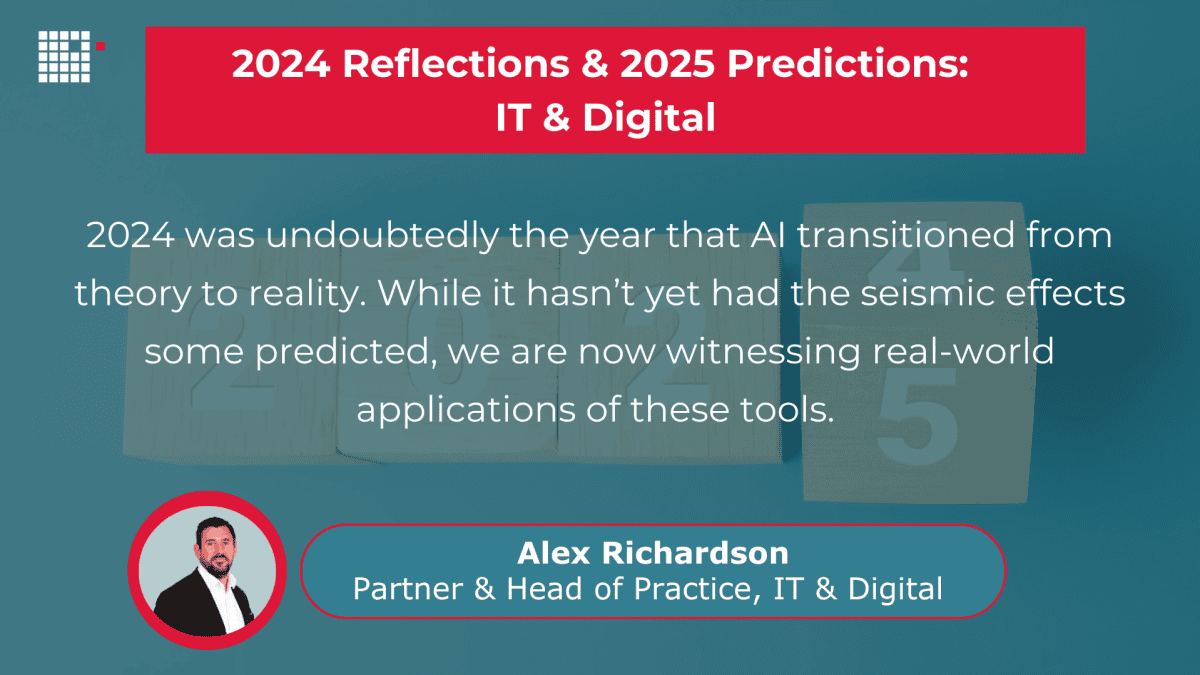The CIO Sentiment Shift from 2019 to 2022 – Survey Analysis
Time waits for no one, and in the information technology space that saying has never been more true. We’ve seen a huge shift over the last three years in terms of the sophistication, setting, and sheer proportion of people’s engagement with the digital world. This shift has been all pervasive, affecting us at work, rest, and play.
Whilst the merits of the move to digital can be debated, as a technology leadership recruiter, I wanted to understand the impact this has had on the way CIOs and IT Directors operate. Berwick Partners host an ongoing programme of thought leadership events (round table dinners etc.) Whilst the frequency of these was obviously impacted by lockdown, such events allowed us to take soundings from senior technologists on their current priorities and future plans. The data set spanned the pre- and post-covid periods, so I carried out some analysis to see what, if any, differences there might be.
First, we sought to address the thorny issue of board presence. In 2019, many conservative sectors still saw IT as a back-office support function and the IT reporting line often reflected this. In our 2019 survey, 58% of our respondents did not report to a Chief Executive, with the majority of these reporting through the Operations or Finance board members. However, by 2022 there had been a positive shift, with 50% of those surveyed now operating as full board members and reporting directly to a CEO.
Secondly, we wanted to understand where CIOs were placing their focus. What were the issues that CIOs were expecting to concentrate on going forward? Back in 2019, most IT leaders said they wanted to expand the application of technology to business issues. With 91% of respondents indicating their main priorities were around data analytics, artificial intelligence, or increasing automation. The future seemed rosy, and tech led!
However, by 2022 our data showed a dramatic shift. Now over 60% of CIO’s primary focus had moved to cyber risk and IT security issues. When we talked to individuals this change was a direct response to a huge increase in the volume and severity of cyber-attacks which organisations are experiencing. Particularly of ransomware attacks.
As human capital specialists we always want to understand how CIO’s feel about their people challenges. Specifically, how confident they are in their team’s make up and in what areas they found the most difficulty attracting talent. Interestingly, the post covid data backed up what CIOs had been telling us, that their IT teams had stepped up and proved their mettle in response to the challenge of lockdown. In 2019, 60% of CIOs were not confident in their team’s capability to deliver its objectives, but by 2022 there had been a complete turnaround. Over 70% of our 2022 respondents had confidence that their team could deliver on the IT strategy and indeed just over 10% now had a clear successor earmarked.
The nature of the talent attraction challenge facing CIOs has also shifted over the three years. In 2019, CIO’s main hiring challenges were in forward technology planning or business engagement. 45% of those surveyed said their main issue was bringing in strategy and architecture professionals whilst 20% were struggling to hire IT business partners.
By 2022 however, this picture looked very different. Given the emphasis on cyber (as touched on earlier), it was not a surprise to hear that 33% of CIO’s were now having difficulty attracting infosec talent. However, we also saw a new trend emerging; the proliferation of in-house agile development capabilities has meant that finding, recruiting, and retaining software development talent is also now proving a major headache for today’s CIO.
These challenges are also exacerbated by the lack of diversity in IT. The UK tech sector is still overwhelmingly male dominated . This was a key concern for our CIOs back in 2019. Then 90% of our 2019 responders said they were concerned about a lack of diversity in their teams. Furthermore 50% of the IT leaders surveyed believed that this was having a direct and detrimental effect on their team’s performance.
Over the intervening period, diversity challenges have quite rightly been at the forefront of the business agenda, meaning that by 2022 the situation had improved slightly. The proportion of our 2022 cohort who were worried about their team’s diversity had dropped to 60% and only 30% still felt that performance was being hampered.
The diversity challenge for tech has clearly not been solved in three years. Yet initiatives such as openness to flexible working, hiring for capability over specific tech skills, plus the promotion of inclusive cultures have all helped the CIOs we surveyed improve diversity in their teams.
To summarise, lockdown, and the subsequent shift to hybrid working, has brought IT teams into the foreground. Yet, with increased prominence comes increased scrutiny. This presents a new challenge for today’s CIOs to adapt to.
Today’s technology leader needs a capable, well-structured and diverse team to meet these challenges. If you would like to discuss how Berwick Partners can help you, or are simply interested in attending future CIO events, email me on alex.richardson@berwickpartners.co.uk or call me on 07736 378 614.
Alex Richardson is Head of the IT & Digital Leadership Practice at Berwick Partners (an Odgers Berndtson company). He specialises in recruiting CIOs, IT Directors and other senior technology leadership roles across a variety of sectors. He has a particular interest in Healthtech and Edtech roles.






